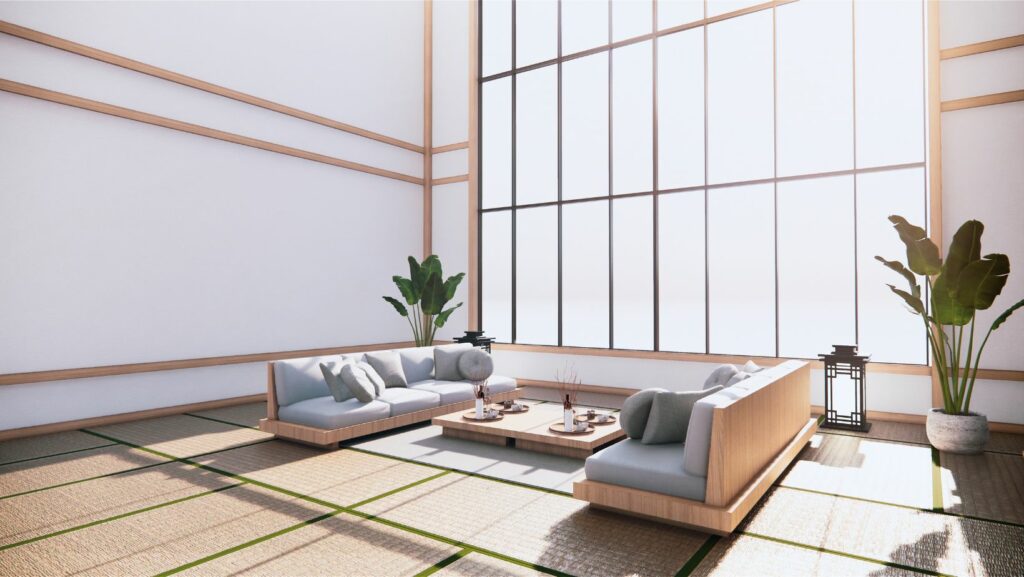Japanese-style furniture epitomizes the art of minimalism and functionality, seamlessly blending both into everyday living spaces. Known for its clean lines and natural materials, this furniture style has transcended borders, influencing interior designs around the globe. Its emphasis on simplicity and natural beauty not only enhances the aesthetic appeal of a room but also promotes a serene and orderly environment.
Homeowners and designers alike are drawn to the understated elegance of Japanese furniture, which often incorporates elements of nature with wood, bamboo, and rice paper. These materials are not only sustainable but also bring a sense of tranquility and earthiness to interiors. As more people seek a minimalist approach to living, the popularity of Japanese-style furniture continues to grow, making it a timeless choice for modern homes.
Japanese Style Furniture
Defining the Minimalist Approach
 Japanese style furniture is characterized by its minimalist design, which emphasizes simplicity and functionality. This approach avoids clutter, focusing instead on the essential elements that blend both form and function harmoniously. Furniture pieces typically feature clean lines and a lack of ornamentation, allowing for an uncluttered and calming space. Materials such as wood, bamboo, and metal are commonly used, chosen for their natural beauty and durability. The minimalist approach in Japanese style furniture not only looks aesthetically pleasing but also serves practical purposes, maximizing small spaces typical in Japanese homes.
Japanese style furniture is characterized by its minimalist design, which emphasizes simplicity and functionality. This approach avoids clutter, focusing instead on the essential elements that blend both form and function harmoniously. Furniture pieces typically feature clean lines and a lack of ornamentation, allowing for an uncluttered and calming space. Materials such as wood, bamboo, and metal are commonly used, chosen for their natural beauty and durability. The minimalist approach in Japanese style furniture not only looks aesthetically pleasing but also serves practical purposes, maximizing small spaces typical in Japanese homes.
The Influence of Traditional Japanese Aesthetics
Traditional Japanese aesthetics play a crucial role in shaping the design and functionality of Japanese style furniture. Concepts like “Wabi-sabi,” which finds beauty in imperfection, and “Ma,” referring to the thoughtful use of space, influence the furniture design substantially. For instance, a traditional “Kotatsu” – a low wooden table frame covered by a futon, with a heat source underneath – exemplifies the ingenious integration of functionality with traditional aesthetics. These traditional influences ensure that each piece of furniture is not just a functional item but a reflection of centuries-old cultural practices and philosophical ideas. This deep-rooted aesthetic influence makes Japanese style furniture distinctly appealing and culturally rich.
Key Elements of Japanese Style Furniture
Natural Materials and Textures
 Japanese style furniture frequently utilizes natural materials, enhancing both the aesthetic and the tactile experience. Common materials include solid woods such as hinoki, bamboo, and seasoned cedar. These woods not only provide durability but also bring a warm, earthy feel to interiors. Additionally, rice paper, known for its translucent qualities, is often used in shoji screens, which softly diffuse light in a room, creating a calming atmosphere. The texture of these materials plays a crucial role in achieving the minimalist yet cozy feel characteristic of Japanese interiors. The integration of natural elements fosters a connection to the natural world, reinforcing the cultural reverence for nature evident in Japanese design.
Japanese style furniture frequently utilizes natural materials, enhancing both the aesthetic and the tactile experience. Common materials include solid woods such as hinoki, bamboo, and seasoned cedar. These woods not only provide durability but also bring a warm, earthy feel to interiors. Additionally, rice paper, known for its translucent qualities, is often used in shoji screens, which softly diffuse light in a room, creating a calming atmosphere. The texture of these materials plays a crucial role in achieving the minimalist yet cozy feel characteristic of Japanese interiors. The integration of natural elements fosters a connection to the natural world, reinforcing the cultural reverence for nature evident in Japanese design.
Low and Functional Design
The functional aspect of Japanese style furniture centers on low-profile designs that emphasize horizontal lines. Furniture pieces such as tatami mats and low tables encourage seated or floor-based use, promoting a more relaxed lifestyle and interaction closer to the ground. Not only do these lower furniture designs make rooms appear larger, but they also support the minimalist approach by reducing the visual clutter that higher, bulkier furniture might create. Pieces are often multifunctional; for example, futons serve as both seating and bedding, exemplifying the efficient use of space. This functional simplicity aligns with the aesthetic and philosophical ideas significant to Japanese culture, prioritizing utility and modesty.
Popular Types of Japanese Style Furniture
Tatami Mats and Their Uses
 Tatami mats, traditionally made from rice straw and covered with a woven rush called igusa, provide a distinct aesthetic and function in Japanese homes. These mats are not only vital for their cultural significance but also for their practical uses in daily life. Each mat measures approximately two by one meters, fitting perfectly into the modular design of Japanese rooms. They serve multiple purposes, such as flooring in living rooms or bedrooms, providing a sleeping area when paired with a futon, and defining spaces within larger rooms.
Tatami mats, traditionally made from rice straw and covered with a woven rush called igusa, provide a distinct aesthetic and function in Japanese homes. These mats are not only vital for their cultural significance but also for their practical uses in daily life. Each mat measures approximately two by one meters, fitting perfectly into the modular design of Japanese rooms. They serve multiple purposes, such as flooring in living rooms or bedrooms, providing a sleeping area when paired with a futon, and defining spaces within larger rooms.
Tatami mats contribute to the serene ambiance characteristic of Japanese interiors. They’re excellent for insulation, keeping rooms warm in winter and cool in summer, due to their natural materials. Their texture offers a unique tactile experience, enhancing the connection to nature that is pivotal in Japanese design. Health-conscious users appreciate tatami because they’re hypoallergenic and provide a firm yet comfortable surface that supports posture during sitting or sleeping.

